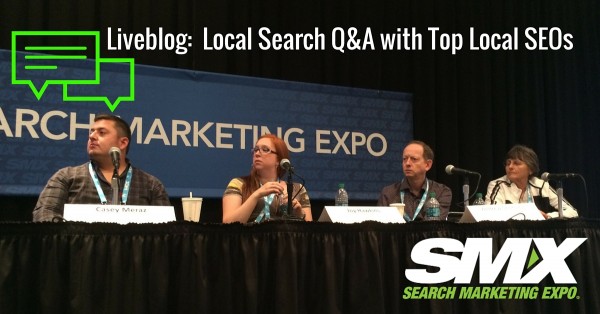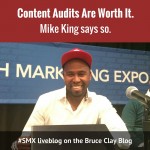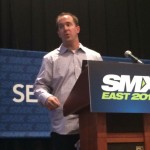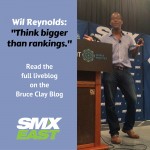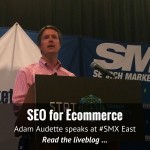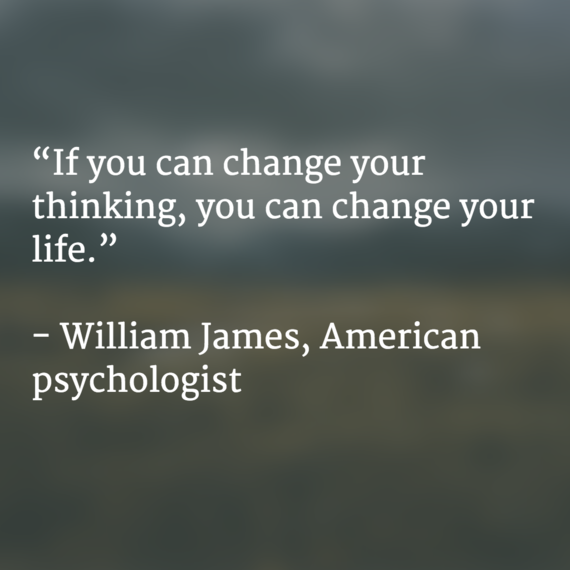
Dan Lee is the CEO of NextDesk. The company designs standing desks who in their 2nd year witnessed staggering growth – a 600% increase.
Now you would think that Lee and his team would be cheering this epic growth. Unfortunately, the sudden growth was a curse. Why – you guessed it the company found it difficult to fill orders and quickly found themselves in trouble.
So Dan found himself at a crossroads. He could either fold under the pressure or Lee could adapt and lead NextDesk through this growing pain. Dan settled on the latter because in his mind failure was not an option.
As the interview progressed, my mind began to drift slightly, I was not disinterested. On the contrary, I was thinking why did Dan not accept the failure?
But then I remembered something that Lee explained in great detail. Dan stated that while in college he took a psychology class that exposed him to William James, an American psychologist.
James said, "If you can change your thinking, you can change your life."
That statement set in motion a journey of "self-mastery," for Lee. He became a student of success. Dan learned that we tell ourselves disempowering stories that limit our belief in our potential. But if you change your thinking. If you change your story, you can empower yourself with massive certainty in your potential.
So while Dan stood at the crossroads, of self-doubt and self-oppression. Lee refused to allow those stories to derail what he knew to be certain. That he has the potential to see NextDesk through this tough time.
"The only thing keeping you from getting what you want is the STORY you keep telling yourself about why you can't have it." – Tony Robbins, motivational speaker.
Changing the disempowering story, you tell yourself is critical to your success. You must divorce those limiting beliefs and begin to believe with certainty in your potential. How – as Dan did, teach yourself everything about how those before you did it.
And yes, you will fail. But failure is never the end of your journey, it’s a friend that will teach you but only if you are ready to listen. Are you ready to listen? Good… let’s start your journey by listening to Dan Lee and how he learned from failure.
So Dan, what's your story?
I was born in West Texas, and raised in San Antonio, in a typical middle-class family. It was a great place and time for a kid to grow up. This was when no one ever locked their house, and the cars were left unlocked in the driveway with the keys still in the ignition. My parents were very supportive of anything my older brother and I wanted to do as long as it was wholesome: Boy Scouts, church camp, sports, and Sunday services.
This was also an era that espoused the values of finding a good job, working for a good company with good benefits until you ultimately retire with a small pension. Not an entrepreneurial environment for sure. I graduated from high school at age 16. I honestly think the teachers pushed me ahead because they couldn't put up with me anymore!
I used my GI Bill benefits to enroll in college. In one of my psychology classes I was exposed to William James--the father of modern psychology. He once said, "If you can change your thinking, you can change your life." And that really resonated with me, so I sought out to begin a program in "self-mastery." I started reading everything I could get my hands on about successful people.
What were their thoughts, habits, philosophies, etc.? It didn't take long to discover that my upbringing wasn't in alignment. Once I realized that, I gradually shifted into an entrepreneurial mindset, and I proved James' theory correct.
What are a few things I've learned along the way?
Enjoy life and treat it like an adventure. Care passionately about the outcome, but keep it in perspective. Chances favor the prepared mind. Preparation is the mother of skill, and there is no greater teacher than experience.
You're building your business for a reason and whatever your reason, hold it close and let that fuel your passion. We've all messed up at some point in our lives, and inside every mistake there is a lesson to be learned from your moment of failure.
Learn from it.
All of this eventually led to a partnership in owning a Yamaha Music Franchise in Kentucky, and after 10 years I sold my half and found myself retired at age 36. The irony is I don't even play the piano. People were always shocked when they found out that I couldn't play an instrument, but I owned a music store.
So there I was: a retired 36 year old sitting poolside with nothing to do, or at least not until my next-door neighbor stopped by. He was a supervisor for a regional jewelry company. The supervisors had to stay at their home store during the holidays, and he asked if I would join him to help sell jewelry.
"Dan, you love people and all you'll do is make people happy all day long. I think you would enjoy it." I didn't even wear jewelry! He said, "Dan, you don't have to lay an egg to appreciate an omelet."
That made good sense to me. After all, I couldn't play an instrument but I owned a music business. Six years later, he found himself reporting to me as a regional vice president of operations for that firm. We're still friends to this day. I enjoyed my time in the jewelry business and made many great friends, but I took an early retirement to help and care for my aging mother. We got to enjoy each other's company for four wonderful years. I highly recommend spending as much time with your parents as possible if you're in a position to do so.
So where is the NextDesk connection? Well, I can finally say my current line of work is the only thing I've been involved with my entire career, sitting and standing. I was approached by an entrepreneur with the idea of building a high-quality, height adjustable desk. He was familiar with my background and asked if I would consider coming on board to help scale the company.
What's the biggest mistake you've made and what did you learn from it?
I've certainly made some mistakes along the way, but the biggest mistake has been here at NextDesk. We were confident that our premium standing desks would be a hit. But I significantly underestimated the market. We had a solid first year and we were already profitable.
Momentum was in our favor and we geared us up for what I thought was a BHOG (Big Hairy Outrageous Goal): A 250% increase in our second year. We moved forward putting the operational systems in place to handle some serious growth. I had underestimated. A lot. It turned out to be well over a 600% increase.
I had seriously underestimated the exponential power of our client base. Most of our clients are highly educated professionals from all areas: Doctors, professors, lawyers and many businesses. Typically they would start with 2–3 of our desks for the executives. Then the orders started getting larger--50–100 desks at a time. Then we got our first 1000 desk client (a $15 billion company).
Houston, we have a problem! We found ourselves in a situation where our little start-up factory just couldn't keep up. Some of our suppliers had never met a company with that kind of growth. They were used to supplying companies with 10%–15% growth.
Somewhere in my voracious reading period, I remembered a quote. The sentiments were that things are never as bleak as they seem when things are going wrong, or as good as they seem when things are going well.
We found a way to get through it. The important thing is to learn from it and move on. I just kept saying that "Failure is not an option" over and over.
I knew we had to push forward with an unwavering commitment to our goal. We did, and it took about eight months to control the chaos and scale to fully handle the new "normal." That time period was agonizing for us. We missed some promised ship dates, and our customer-service lines were often at maximum capacity. At one point I just sat down and began calling clients to personally apologize.
Surprisingly I found that most of the upset clients were actually empathetic to our situation because they had experienced similar things in their businesses when they were growing and expanding. Many cared enough to share their ideas with me as well as give me encouragement. They will never know how much that meant to me during that time. And candidly, it was the one thing that gave me the energy to press on.
The silver lining is we now have a new 35,000 sq. ft. state-of-the-art manufacturing facility in Austin. I learned that if you truly listen to your customers, you'll get some the best, most valuable feedback.
Describe a time when you missed a deadline or failed to meet expectations. What lesson did you learn from it?
I learned a good one in college. I had a paper due on a certain date, and I had missed the deadline. It seems like I thought going out with my fraternity brothers was more important than working on my paper, and it cost me a grade point.
After I got a B on the paper, I made an appointment to see my professor after class to complain. "Why didn't you give me an A?" Casually, he replied, "You can't get an A when you've made B-quality preparation and effort." That professor, who ended up being a lifelong friend, taught me that it's vital to have mentors that care enough about you to be brutally honest.
FYI: I never got another B in his class.
Solving complex problems often requires a re-framing the problem. So what is your process of re-framing the problem so it can be resolved?
You already know going in that starting a business is, by its very nature, a challenging proposition destined to have complex problems. Solving these problems may require a complete paradigm shift; Reframing might involve taking a look at what created the problem in the first place.
I think we sometimes get so close to things that we can get trapped "inside the box." It never hurts to bring in someone from outside of your industry because a fresh set of eyes aren't suffering from tunnel vision. My experience is that problems are always progressive.
By that I mean they present themselves at different levels of flights: Once one problem is solved, new problems present themselves. It's important to recognize that not having problems isn't necessarily a good sign. Growth is the only evidence of life, and experience will teach you that it can be painful.
That's why they call it growing pains. You just have to push forward with an unwavering commitment to your goal, and hire people better than you with the same passion and dedication.
The execution of a creative idea can be a chaotic experience. So how do you organize, prioritize, and manage your team’s creative ideas?
The real question is how can you take what is generally considered to be a chaotic experience and turn it into a productive and fun exercise?
This can be done best by setting up a meeting with all of your best creative staff members and establishing this rule before the meeting begins: Any and all ideas are not to be "value judged" when presented.
This isn't a value-judging or decision-making meeting. This is simply a brainstorming session. There are no bad or good ideas, and all ideas are accepted. Once the idea session is complete, a follow-up meeting is held to evaluate each idea individually. At that time, the ideas that aren't deemed worthy are eliminated.
Basically it's a distillation process with only the top 10 ideas surviving. The ideas are then ranked from 1 to 10 by each participant, and then they are tallied with only the top three ideas left.
Not every business determines success in the same way. What trophy do you want on your mantle?
I have a story about trophies. Over the years, I accumulated a number of sports trophies and even a military trophy for being the most outstanding trainee during basic training. One year my wife had a garage sale and I decided to pull all of them out. My wife said, "Why are you putting those old trophies out? Nobody is going to buy those."
One hour later, all the trophies were gone.
Personally I have little interest in personal trophies, but there is one team trophy that I'd be proud of. It would be for the Best Company to Work For. Being known as a great place to work has rewards far greater than any trophy on the mantle. It's critical for companies to focus on something more than transactions. I'd like our company to be a partnership of people creating a better life for others and ourselves. Don't get me wrong, transactions are important, but that side must be tempered and crafted with building deep relationships both internally and externally.
That's how you add transformational value to any company.
-- This feed and its contents are the property of The Huffington Post, and use is subject to our terms. It may be used for personal consumption, but may not be distributed on a website.














